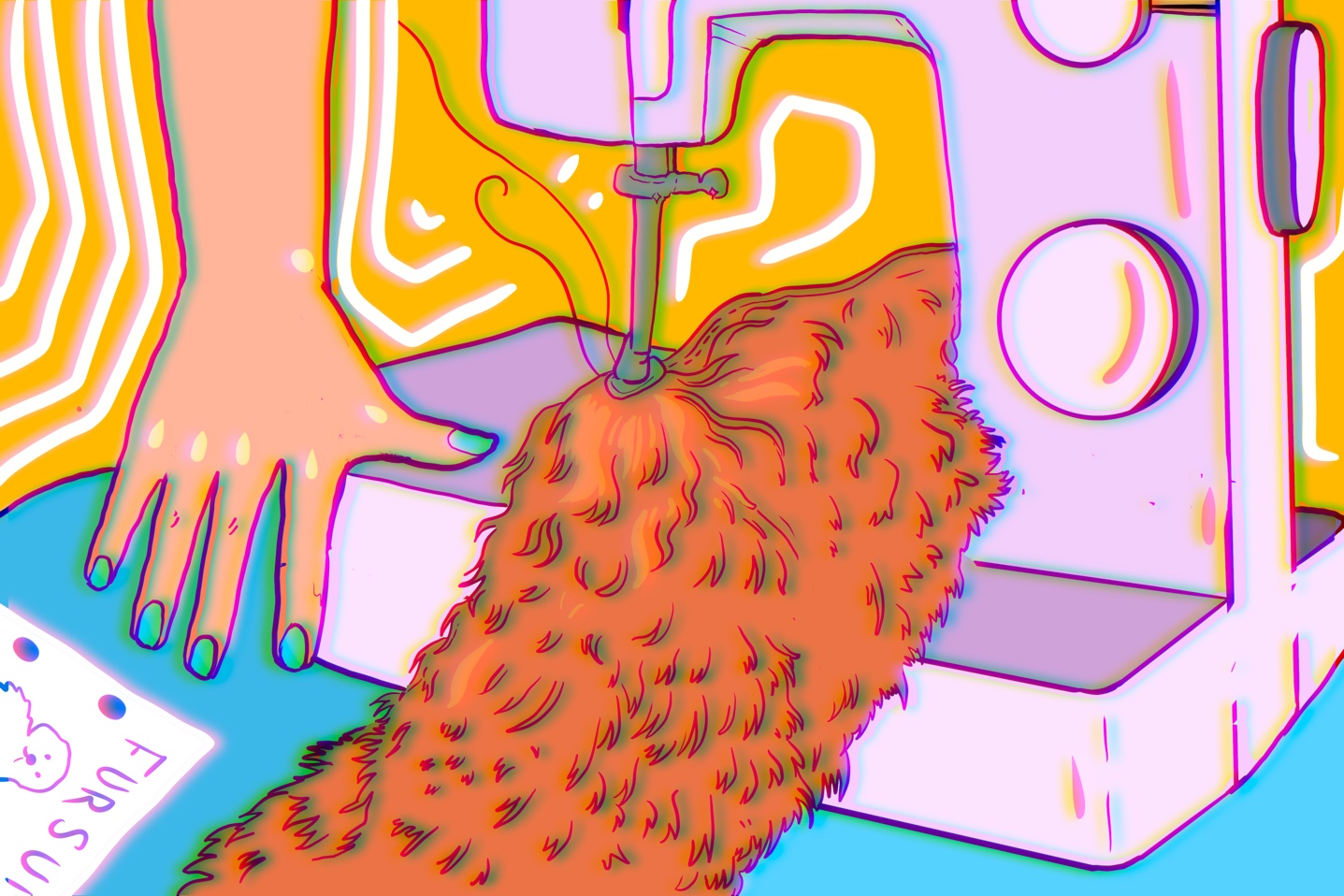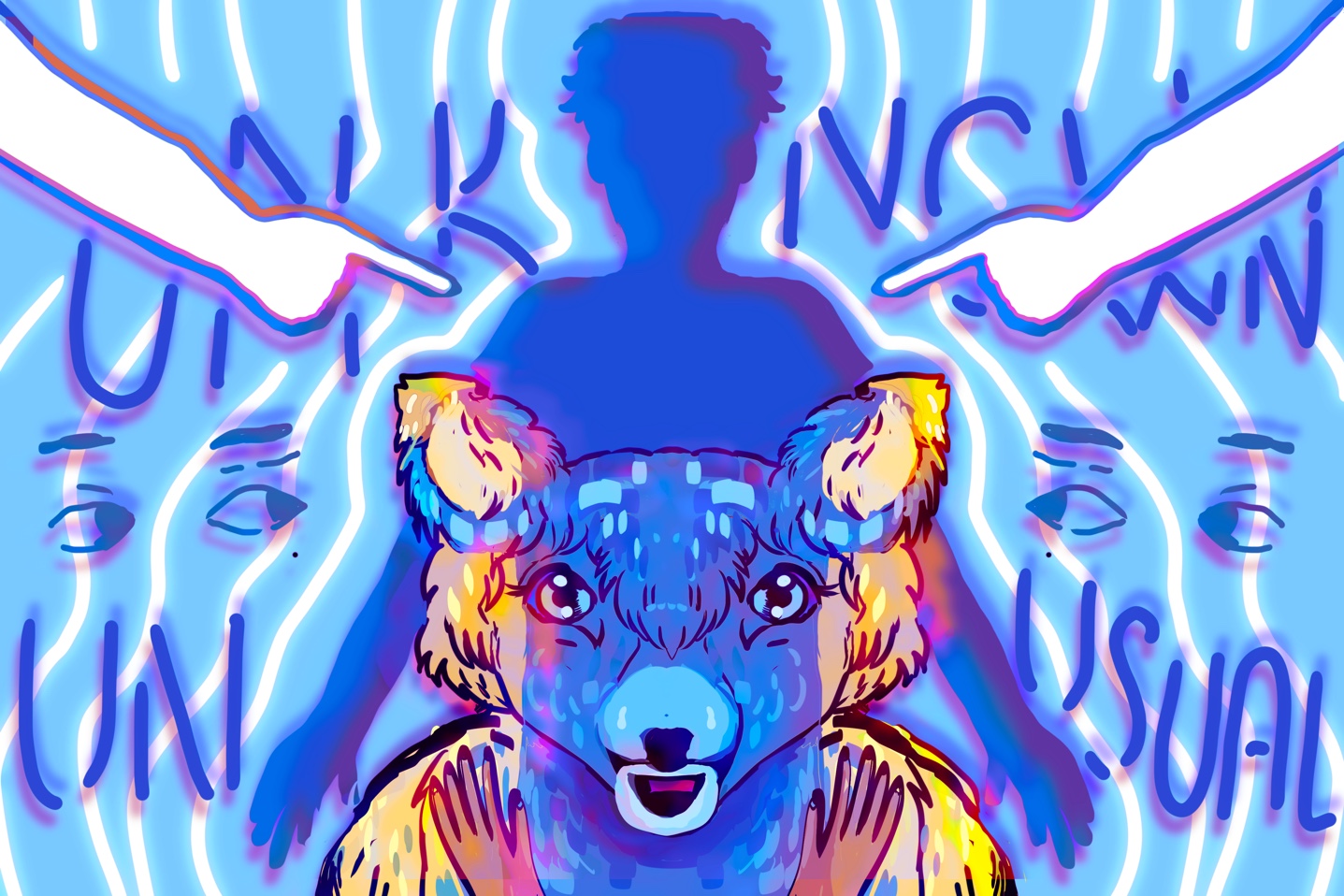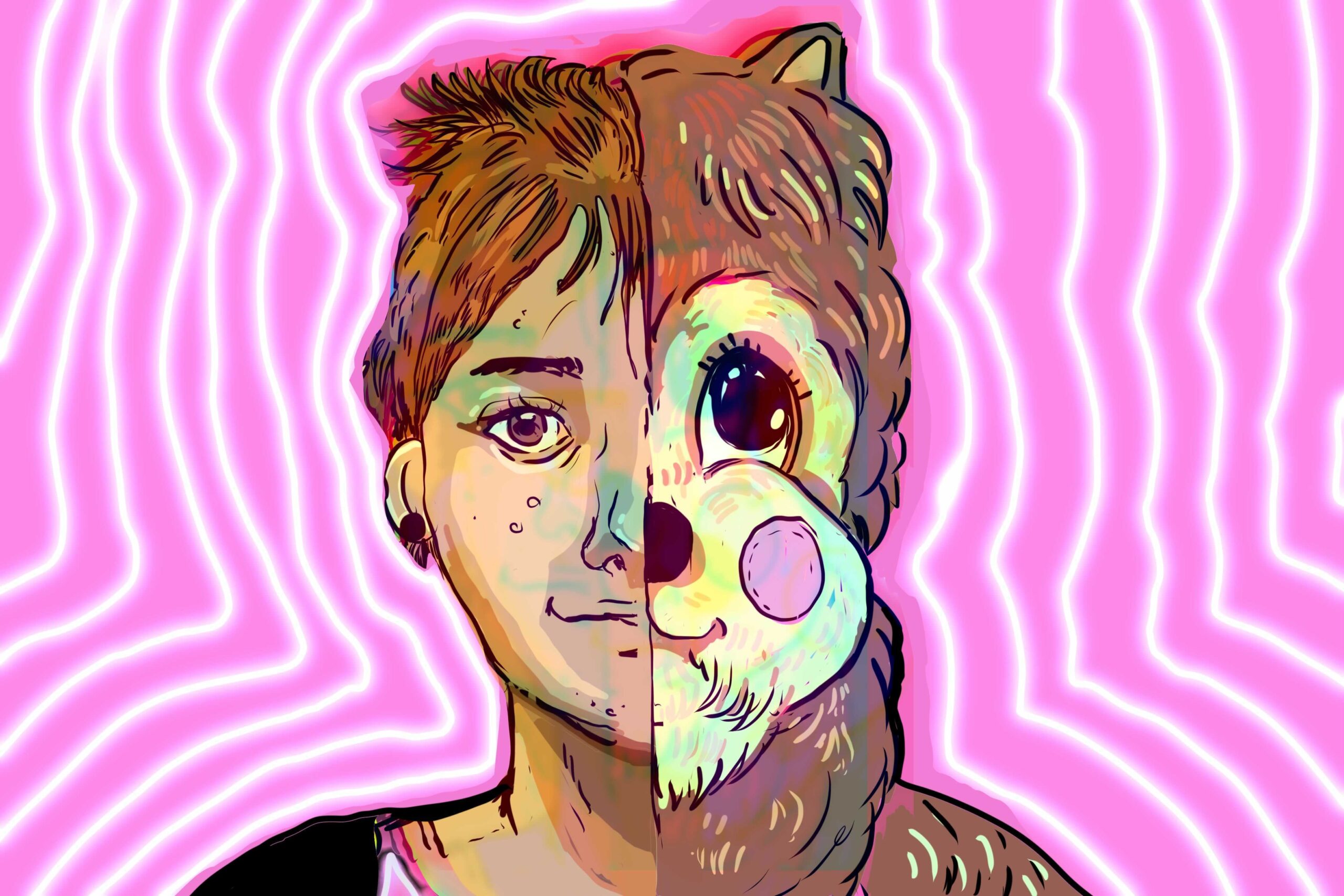The Delta Hotels Ottawa City Centre was the venue for a small convention held from Nov. 12 to 14. About 500 attendees drove in from across Canada, renting hotel rooms to stay for the weekend or scavenging for parking along nearby city streets. Attendees flooded the lower floors of the building, using the hotel’s conference rooms to host auctions, panels and dances.
Some people attended to share their creativity. Others went to socialize. Yet others were there to explore their identities.
But all attendees had one thing in common: an interest in anthropomorphic animals.
CanFURence is an annual event hosted by and for the “furry” community, a group of people who create humanlike animal characters as representations of themselves. The furry community may present itself online through members’ art of their characters or custom made costumes called “fursuits.”
Attendees wore oversized heads, hand-shaped paws and large tails belonging to their fursuit characters. Some fursuits took on a more realistic appearance, while others were cartoonish and featured an array of colours.
The question of why furries wear fursuits or attend conventions has many answers.

By style, not price
Sashanna Robinson is one of the community’s costume designers, also called a “fursuit maker.” Robinson said she has only made a few fursuits because it can be time consuming and expensive.
“There’s a lot of effort that goes into it—a lot of sewing, a lot of crafting,” she said. “The head alone, you can at least spend a couple weeks on it.”
Robinson explained fursuits can come in different forms, the main difference being how much of the body they cover.
According to Robinson, partial suits usually cover the head, hands and feet and cost between $400 and $800 on average. Full suits, however, cover the entire body and cost between $1,300 and $2,000 on average.
“If you’re really good, you could make a really good living out of making fursuits,” Robinson said.
Montreal-based fursuit maker Fred Mora makes plush suits, which his wife Tammy Lee Stevenson called the “last level” of fursuits. For Mora’s suits, the legs, arms and waist are made much wider and are stuffed to recreate the look and feel of a plush toy.
Unlike full suits, which are divided into parts that are put on one piece at a time, plush suits are almost entirely sewn together. Because of this and the added material, Mora said the suits can cost between $4,700 and $5,300 USD.
However, both Robinson and Mora said the style of a suit is what really matters.
“You don’t look [for] a suit by the price. You look [for] a suit by the style you really want,” Mora said.
Robinson said this may be because the fursuits allow furries to explore new identities, especially those belonging to gender or sexual minorities.
“You dress up like a person that can be your idealized self,” she said. “It also presents an avenue for people that aren’t comfortable with their original pronouns to come out and say, ‘I am physically male, but how I feel is different.’”
This was the case for Nick Collette, a 21-year-old truck driver who attended the convention wearing a fursuit of her Shiba Inu character Aturo. Collette said wearing the fursuit allows her to explore her gender identity.
“I recently learned that I lean towards being androgynous,” Collette said. People who are androgynous tend to express themselves as both masculine and feminine.
“Being in suit, my behaviours sort of bounce between masculine and feminine and a lot of the time people can’t tell my gender in suit … That actually just, deep down, makes me really happy,” she said.
Collette also said wearing the suit makes her more confident.
“I can do so much more in the suit than without it. I can get up on the stage and dance,” she said, referring to one of the convention’s dance events. “I couldn’t do that without the suit.”
Despite wearing a fursuit of her character Aturo, Collette said her furry friends call her Riley after the gender-neutral name she chose for her new character. She said this is because she identifies more with Riley, who is a hybrid of two species: African wild dogs and maned wolves.
Collette said her fursuit for Aturo was made by a small maker, but it still cost $1,400. Collette also said she is getting a fursuit for Riley that will be four times as expensive.
“When it comes down to that level of freedom, being the character that you made from scratch, that price is absolutely nothing,” Collette said.

The elephant in the room
There are some people who don’t understand the furry community.
Kenneth, one of the event organizers, said furry community members bond over their shared experiences with bullying. He said he did not want to disclose his last name because, for the foreseeable future, he wants to separate his work life and his association with the furry community.
At conventions, he goes by the name of his character, Conreeaght, to maintain this separation.
“A lot of furries … either prior to identifying with the fandom or while being identified with the fandom … were bullied,” he said, adding that it was prior for him.
Furries and non-furries alike have different theories about why this stigma exists.
Kenneth said he thinks people stigmatize furries because the unusual appearance of the characters disturbs them.
“They don’t know what to make of it, and anything that is unknown and unusual, it’s considered an out-group,” he said. “[Fursuits] have such techniques, such as follow-me eyes and moving jaws and they get closer and closer to what’s known as the uncanny valley.”
The uncanny valley is the unsettling feeling someone gets when they encounter a non-human being that has humanlike features.
Robinson said she thinks people have a negative opinion of furries because the community’s focus on unique, custom characters makes it hard to market to them.
“Geek culture was negative 20 years ago and then all of a sudden, it started being marketable,” she said. “You could mass produce stuff that people will buy because they know the characters. But in the furry fandom, you can’t quite market to us because everybody’s so individualistic.”
Caitlin Hart is not a furry but a former Carleton student who is doing her PhD in gender studies at the University of Ottawa. She said being a furry can be sexual for some people, but it is not necessary to be part of the community.
Because of this sexual element, Hart said people may stigmatize the furry community because they wrongly associate it with beastiality.
“The whole point of the furry community is that you’re dressing up as an animal and acting as an animal. There’s an understanding that it’s not an actual animal who doesn’t have the ability to verbally consent,” she said.
Hart added that because of this stigma, conventions are a good way for people in the furry community to meet each other and stay safe.
“A lot of it’s pushed to the internet and sometimes that means you have a lot of unverified people and a lot of abuse and so forth because you don’t always know who you’re talking to,” she said. “Having conventions, it enables a little bit more safety.”
Kenneth said non-furries may also be jealous of how much fun furries have in costume, which can either draw people into the community or push them away. He said Ottawa locals have been reacting positively.
“There’s been a lot of very confused Uber drivers dropping off stuff like pizzas,” he said. “They’ve been wanting to get pictures with all of the fursuiters that are cooling themselves off outside.”
Kenneth added that regardless of where the stigma is coming from, furries have learned how to protect themselves from negativity and find support from within the community.
“Togetherness is really what drives the fandom,” he said. “We might be weird, but we’re weird together. We’re in the one place where weird is dominant.”

Lending a helping paw
That sense of togetherness extends to activities beyond conventions and meetups. Members of the community often do furry-related charity work.
Collette said her interest in African wild dogs and maned wolves does not stop at her new character. She said she makes monthly donations to nature conservation charities dedicated to preserving those species.
Mora said that when he joined the furry community, he started using his German shepherd fursuit to contribute to charity. When the Megantic train crash happened in Quebec in 2013, he wore his suit while donating pencils and notebooks to children.
The local furry community also bands together to help charities through community partnerships and donations from event attendees.
CanFURence was sponsored by Courageous Companions, a charity that provides trained service dogs to veterans and first responders free of charge. Courageous Companions also sponsored the event in 2018 and 2019.
The charity received donations through the convention’s auction, according to Michael Reeve, who oversaw the auction and the collection of funds. He said CanFURence attendees could bid on objects people donated to the auction, such as art and vinyl records.
Reeve said they sold approximately 50 items and raised a total of $11,210 for the charity, which is the highest sum they have raised since Courageous Companions became the convention’s sponsor.
The organization pledged to donate items to CanFURence’s future events, regardless of whether Courageous Companions remained the convention’s sponsor.
A representative of the charity, Shirley Jew, who is not a furry, donated one of the objects for sale—a mirror with the CanFURence logo and their slogan “Stronger Together” engraved on the frame.
“The symbolism of the mirror is you have to look at yourself every day and know you did the best you could,” Jew said.
Jew is a Chinese, first-generation Canadian who developed post-traumatic stress disorder (PTSD) from her military missions in Afghanistan. She uses a service dog, for which she said she has gotten a lot of judgement.
“My dog is small so I’m a fake. I have all my limbs so I’m a fake. I’ve often been told I look fine so I’m a fake,” she said.
Jew said she did not hear these kinds of comments at the convention, which is what makes the community special.
“We’re accepted for who we are and there’s zero judgment here,” Jew said. “To be welcomed and treated with such kindness by total strangers, it’s rare these days.”
She said her contribution to the convention was based on how the community supported her rather than how much money was raised.
“When you’re treated as well and treated as openly and welcome as they treat us, it would be wrong of me not to be part of it,” she said.
Featured graphic by Sara Mizannojehdehi.






